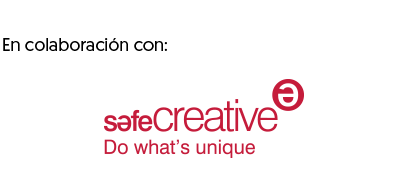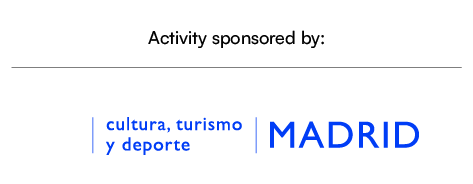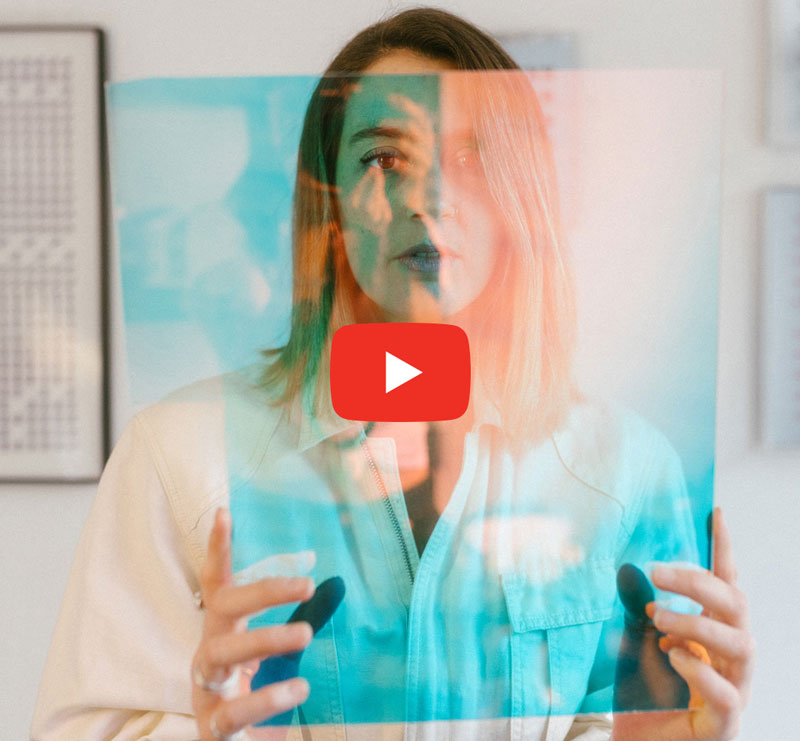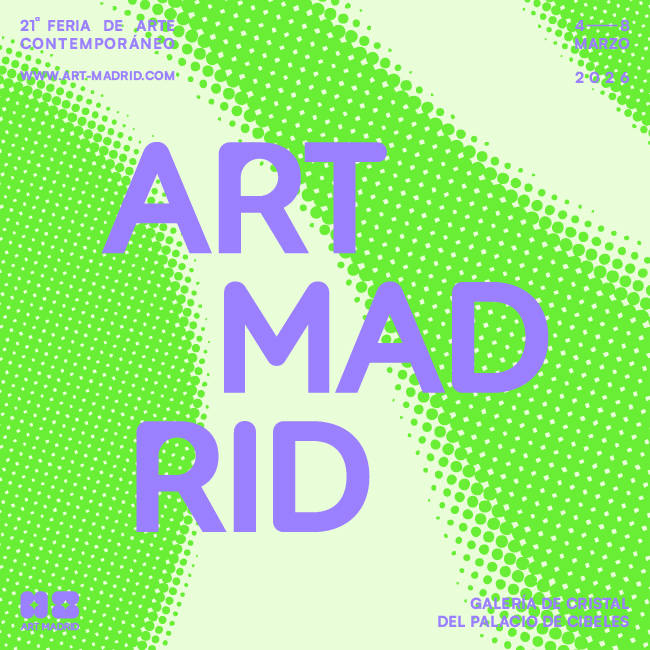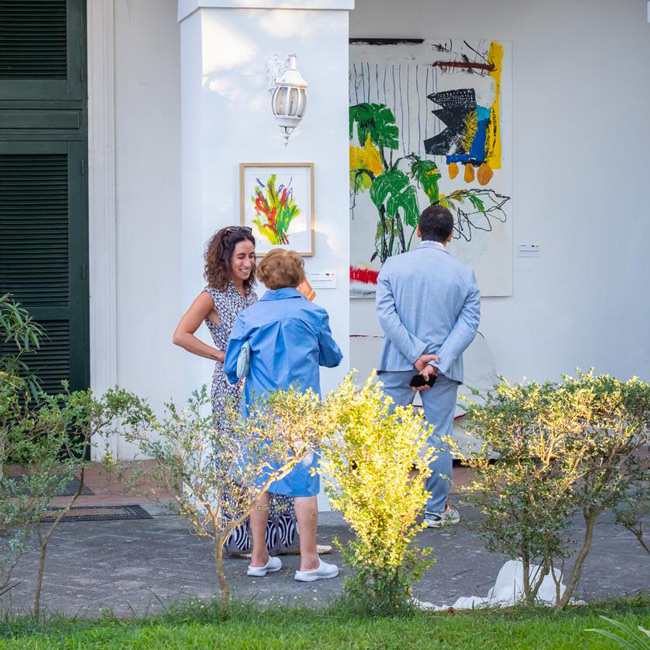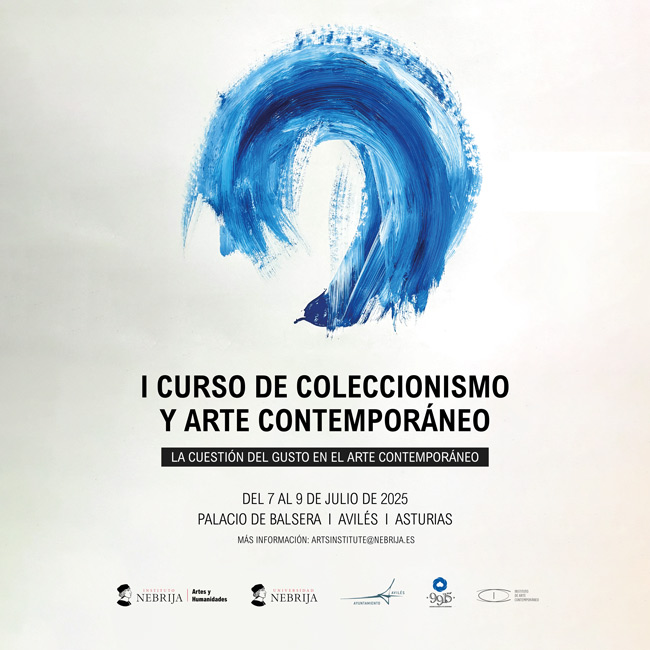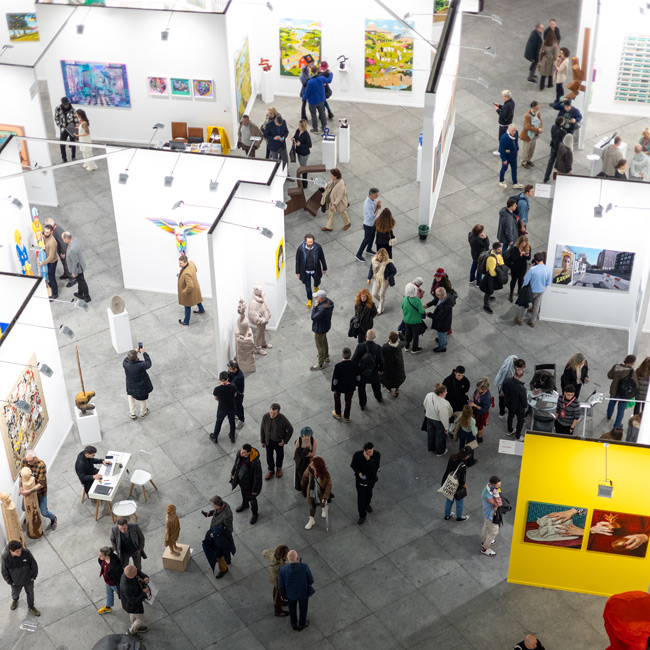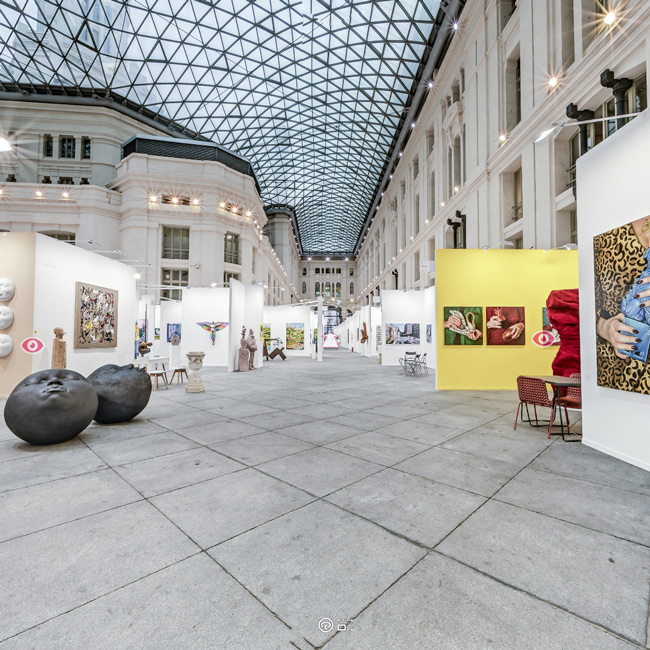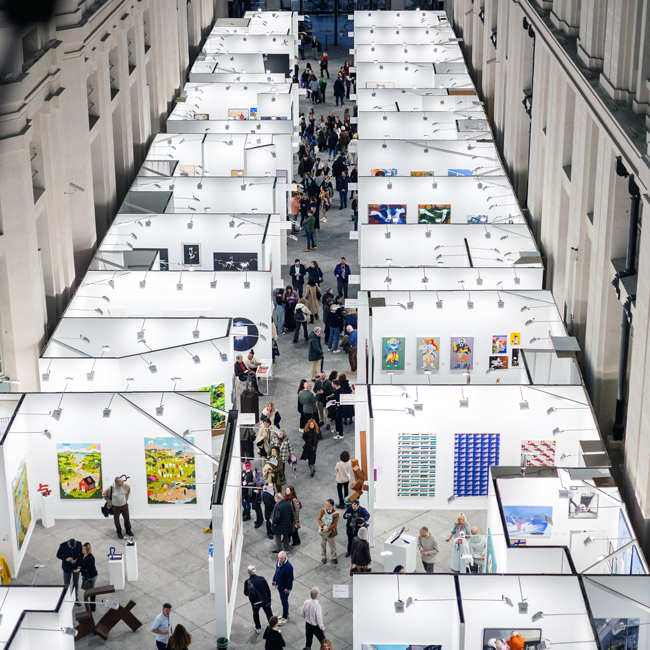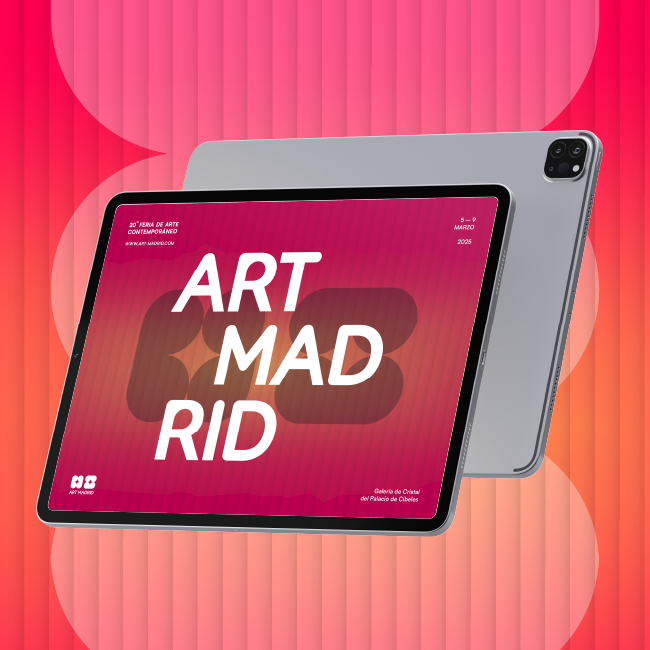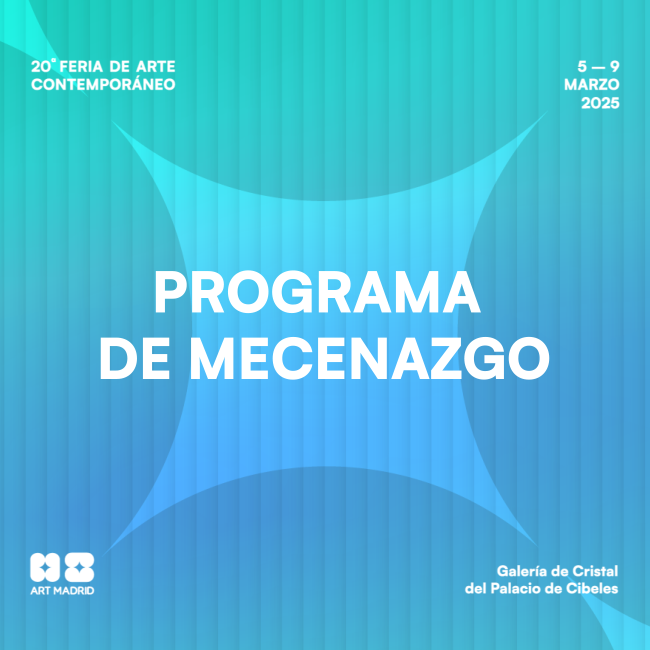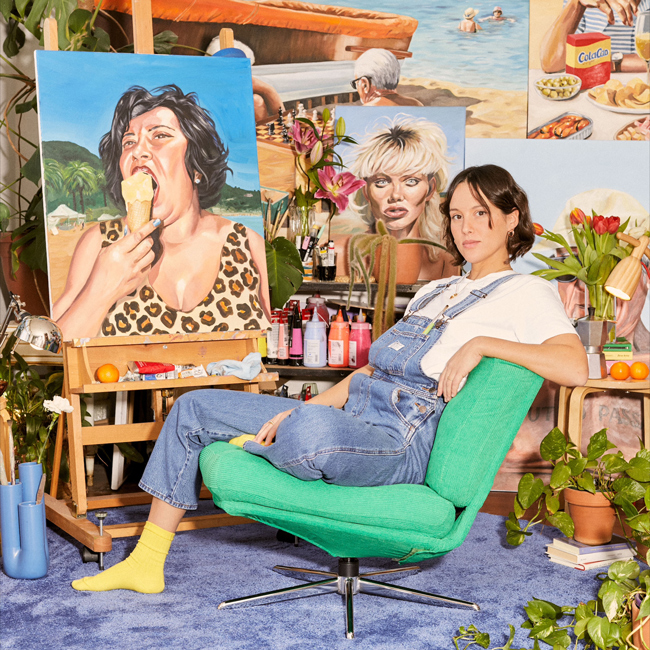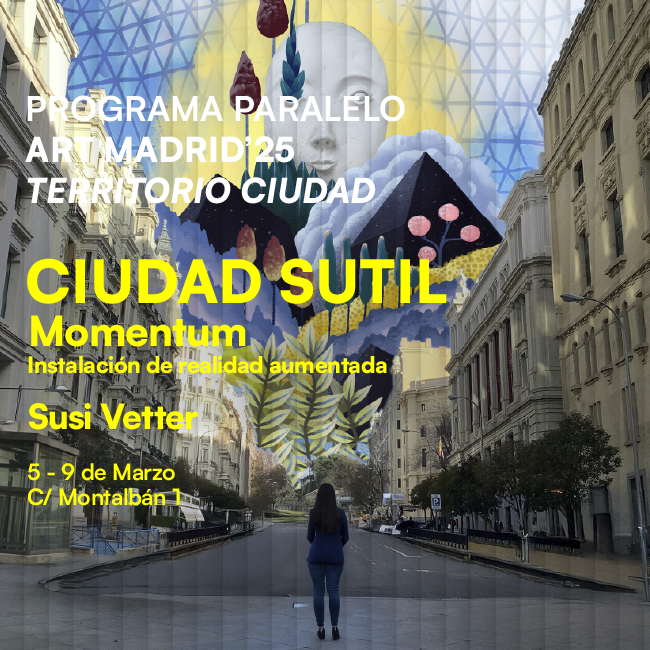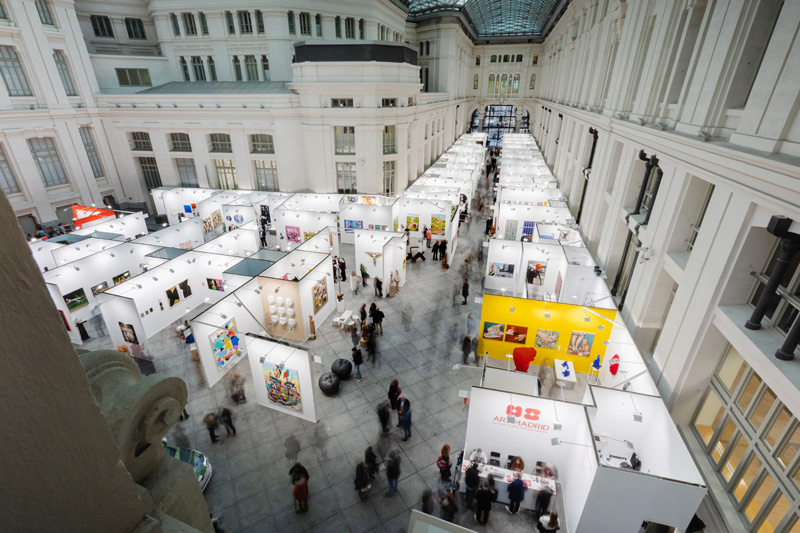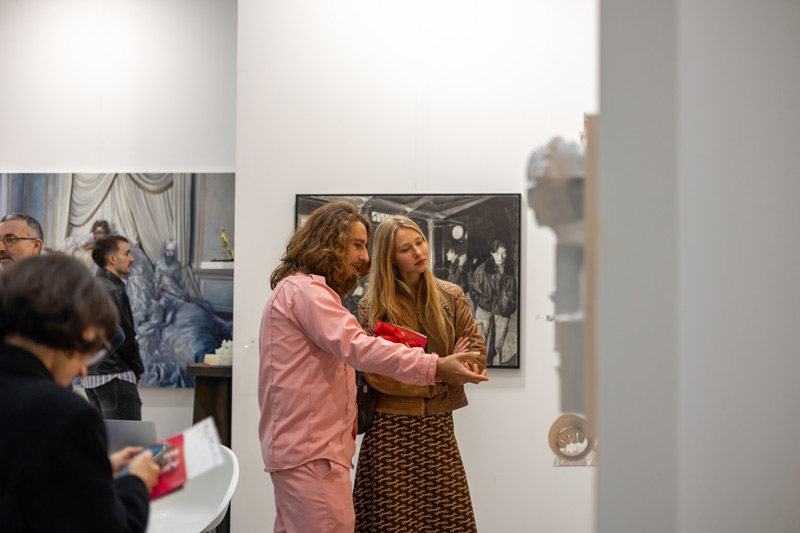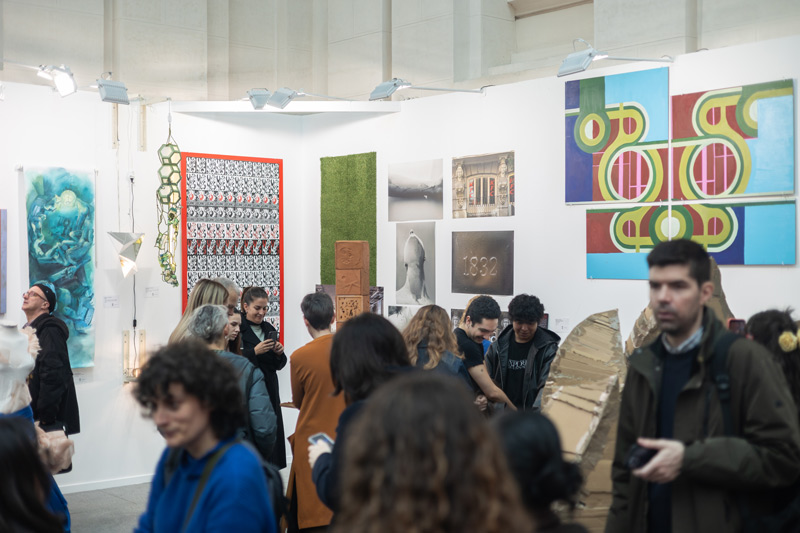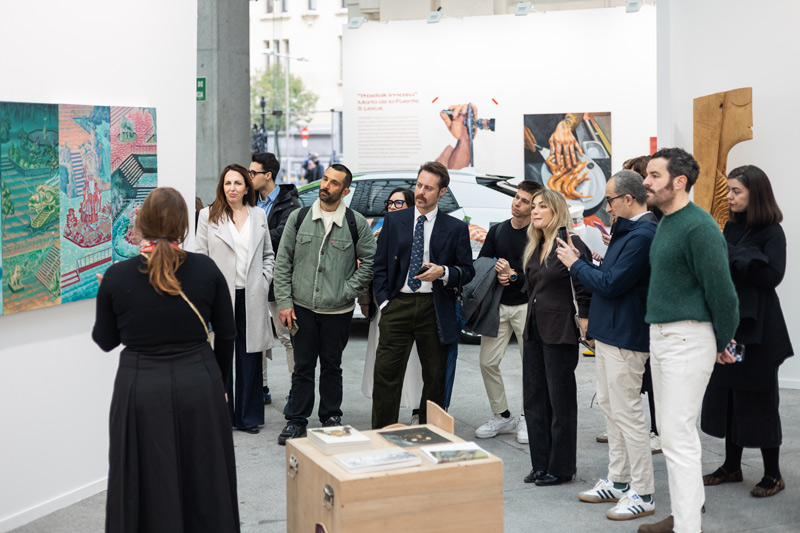CARLA EFFA: THE GAMES OF THE PERSPECTIVE
Feb 6, 2024
art madrid
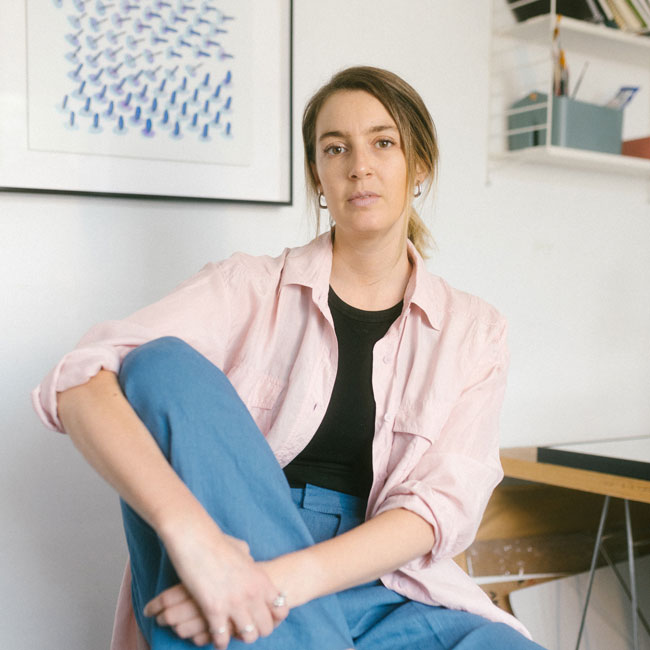
ARTE & PALABRA. CONVERSATIONS WITH CARLOS DEL AMOR
There is so much architecture in Carla Effa's work that it is almost impossible not to appreciate it, and that is a compliment, because the worst thing about anything is that the intention is so obvious that it becomes obvious. She, an architect by training, manages to juxtapose knowledge without making it seem so. Legend has it that if you stand in front of one of her creations for a long time, you run the risk of being hypnotized, because looking at them creates an illusion that takes over the pupil and finally defeats it.
The wood in different levels, the bright colors, without disregarding the white, the paper, the acrylic and the repetition provoke that intoxication that has something magical when, for example, a piece of the work suddenly hides and capriciously reappears when we change our position and make a new visual inspection. All art depends on the point of view, yours even more so. The titles give us a clue as to where things are going: "Diffuse Limits", "When Everything Is Still" (I would add here that her works are rarely still).
If you visit the fair, you will quickly recognize Carla's work, perhaps it is best to leave her contemplation for the end, so as not to fall under the spell, although it is true that we need some magic in our lives, so better let yourself go and get into the game.
If you had to define your work in one sentence, what would it be?
I think a sentence that would define my work would be "investigations and games about perception", because I think perception is something that is present in all my work, whether conceptually or visually, there is something related to perception, with games about perception. So if I had to define it in very short words, that would be a good way to narrow it down.
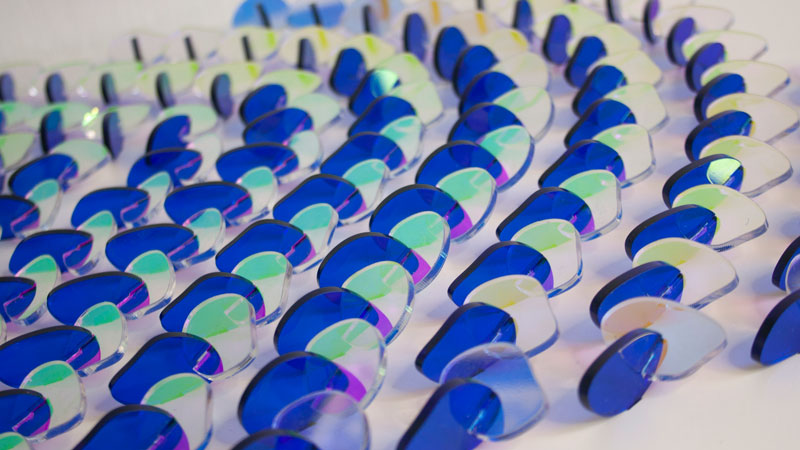
Can architectural codes be applied to art?
I think you can transfer some of the codes used in architecture to art, especially when it comes to design. I think the way I used to project and design in architecture, I use it a lot in my artistic work. I also transfer the use of software to my work. But I think in art there is more freedom and it is more playful. There are fewer rules in art, and in architecture you generally have to respond to a functionality, to the use of people, but in art you have fewer limits in that sense. Also, in architecture you generally have to respond to a functional structure, and in art that is not necessary. But yes, it was also very useful for me to have this knowledge of structures when I had to make larger works. In that sense, I think there is a crossover between architecture and art.
Three-dimensionality is a constant in your work, how do you manage to integrate it in a natural way?
I think three-dimensionality integrates so well into my work because it is something I have thought about from the beginning. It is part of the design of the work, as well as the choice of materials. When I design a piece that will make up the work, I also imagine what material it will be made of. For example, if the material is going to be acrylic or wood, I design different types of shapes because they have different thicknesses and transparencies. And so I design, project and work on the computer, sometimes creating 3D works. During this process I adapt and get the three-dimensionality to achieve the concept I had in mind from the beginning. Usually I imagine something and when I produce it, it changes, it takes on a new dimension and especially when the work is assembled, when you leave the computer and create it, it takes on a whole new dimension. But three-dimensionality is something that always starts with the initial concept.
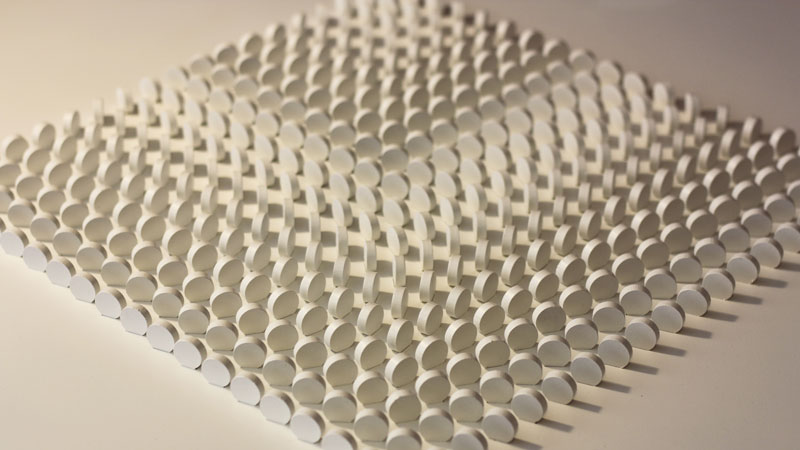
Light is a capital in the history of art, but where there is light, there is probably shadow. Are you comfortable playing with both?
Yes, I think I feel comfortable working with both light and shadow; I make each one the protagonist in a different way in the works. For example, in my three-dimensional, completely white, bench-colored wooden works, the protagonist is the shadow, because it is the shadow that marks the shapes and the pieces, being the shadow the one that mutates and makes the work dynamic.
In other works, for example, those made with iridescent acrylic, the light is totally the protagonist, since it is the light that makes the pieces project different colors on the background. So, the light is what makes the work dynamic and the colors it has.
However, in other works where I work with colored acrylic, both the shadow and the light are the protagonists, since the light allows the colors of the work to be projected on the background. In this case they are more static colors that, in turn, are the shadow of the pieces that make up the work, both having equal importance. Light and shadow are always important in my work, only sometimes there is one that has more prominence than the other. But I like to think that yes, I like to work with both because they are the ones that give this dynamism and movement to my works.
How do you choose colors? Because they produce a magnet effect on the viewer.
The selection of colors in my work has been a process of research. One of my first exhibitions was composed of twenty-seven watercolors, for which I did a lot of color tests, mixtures, in short: trial and error. These watercolors consisted of a chromatic gradient that created different dimensions through the superposition of colors. The interesting thing about the work –besides the work itself– was that I generated a range of colors with which I could continue working, revisiting these colors and watercolors, and that have served as a basis for my work in both watercolors and wood.
Another way I choose colors is according to the sensations I want to generate. There is something of intuition, that is, I have tried things that suddenly happen again, returning to the same colors or palettes, because I intuit that they will work well or I like how they work, for example, the reflection of certain colors on the surface. In the works where I work with iridescent methacrylate the color is given by the material, of course, so I focus on investigating the angles and projections of the material itself that will alter the resulting color. In short, I would say that I select the colors through a process of research, testing, and some intuition.
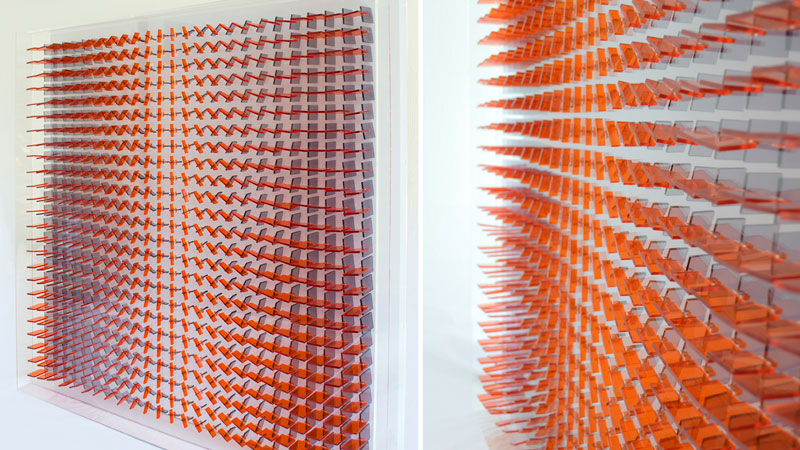
And how do you get a piece to "move"?
I think there are several ways to create movement in the work. One is through composition, where the use of geometry and the arrangement of the pieces creates intersections and angles that give the work a certain visual movement and shape.
Another way to create movement is through color. For example, complementary colors tend to vibrate to the eye, so by using red and green lines in sequence, the work becomes more vibrant.
On the other hand, my works also have a certain movement through the use of three-dimensionality, since they are works where different shapes are perceived depending on the light they receive. My most recent works have been made with iridescent methacrylate, a material that changes depending on the light it receives and the angle from which it receives it, projecting different colors, which also gives the work movement and makes it very dynamic.
I think these are the main factors, at least in my work, to create movement in the work.
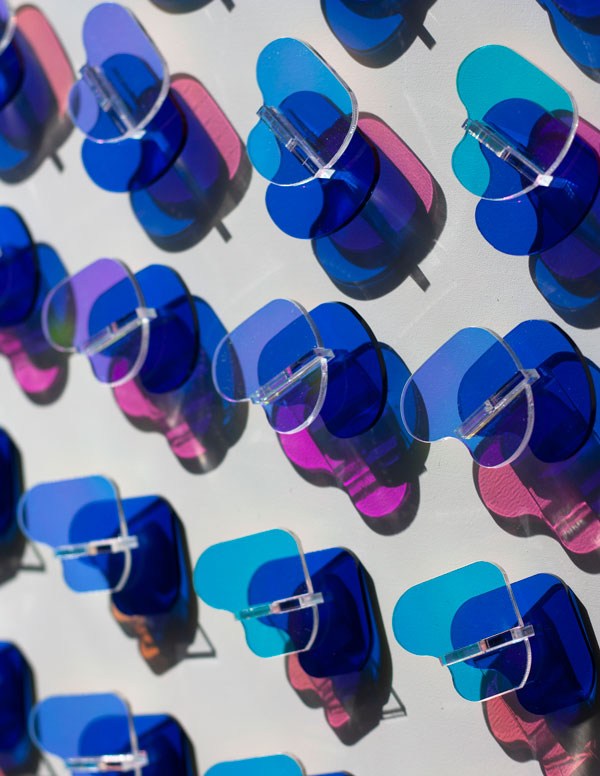
Has a viewer ever been hypnotized by one of your works?
I don't know if there's ever a viewer who gets lost in one of my works. But what I can say is that when I'm making them, they create a hypnotic sensation in me, a little bit of a trap. You get lost in the work during such a repetitive process. Especially when I painted the watercolors, I went into a trance of repeating, painting and painting the same geometric shape. Just as something hypnotic is created in the process, I hope that something hypnotic is created in the work.
Where is your work going?
In the last projects I've done, I see that the evolution of my work is towards giving more strength to the concept behind the work, and that the physical or aesthetic part is mainly a result of the conceptual part. Above all, I have been working on the crossover between my work, urbanism and architecture. I am interested in how cities evolve, how we perceive certain spaces, what their characteristics are and why they make us feel and live in those spaces. Also to have a critical eye on how cities have expanded, what has happened around nature and what happens around the history and architecture that has shaped the cities. I think it goes that way, maybe they are concepts that can evolve and change, but I am very interested in working on urbanism and architecture. Another line I would like to develop is working with larger scales. I really like working on installations and mural projects, so I would like to focus on that. I feel it is a line where art and architecture intersect, and it would be very interesting to continue exploring.
